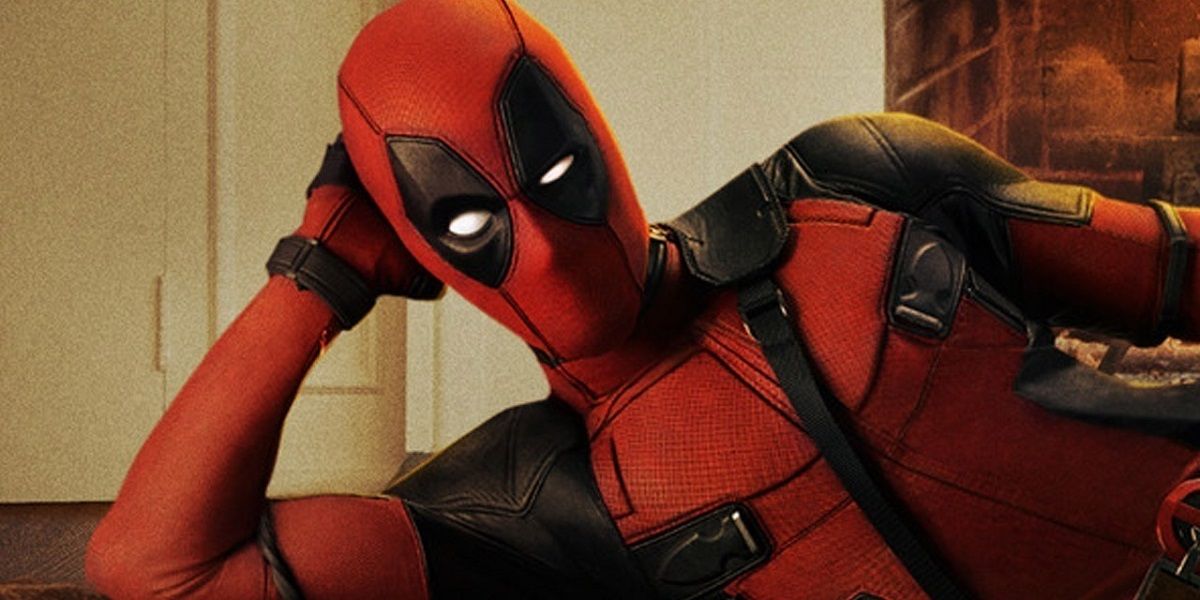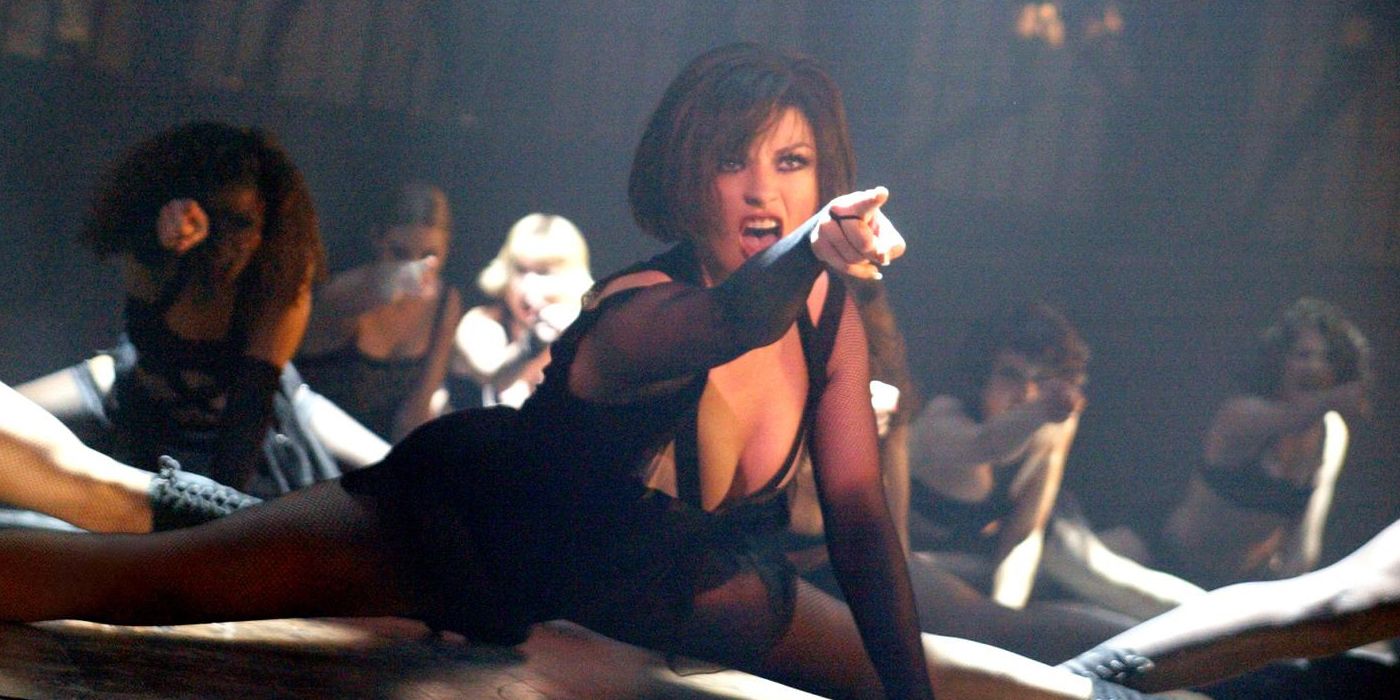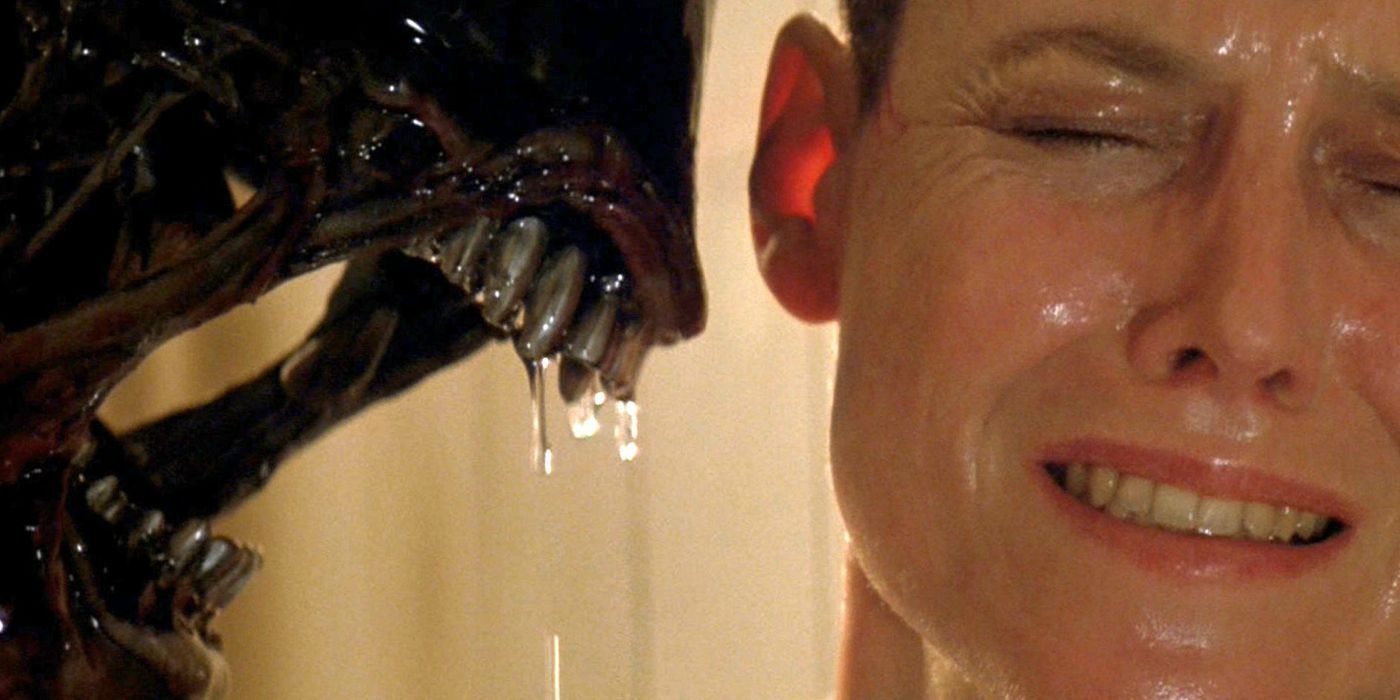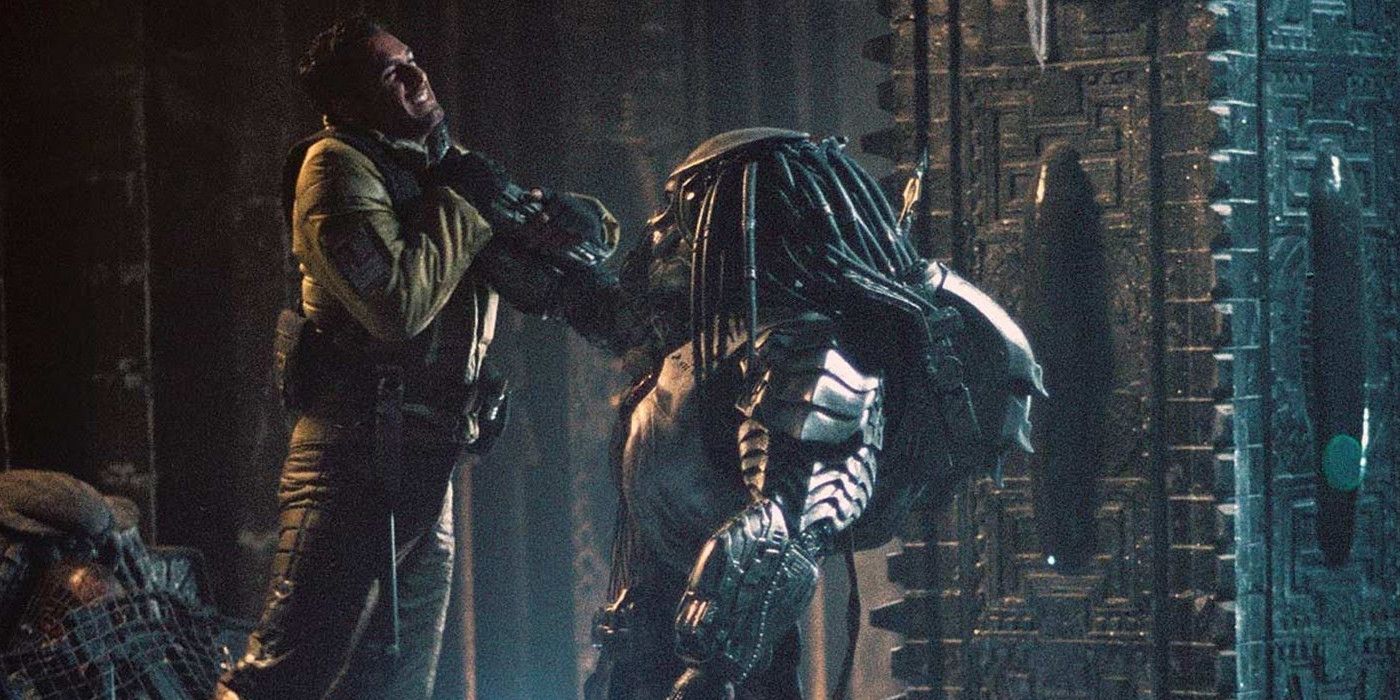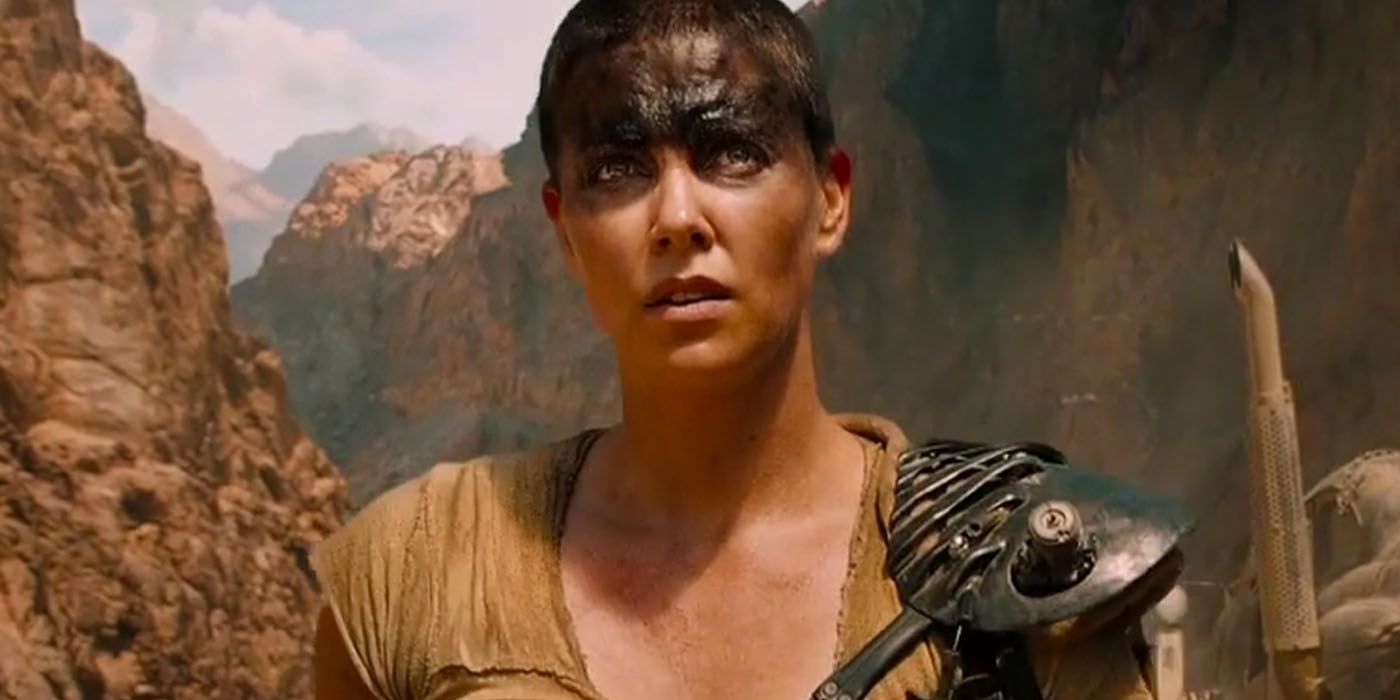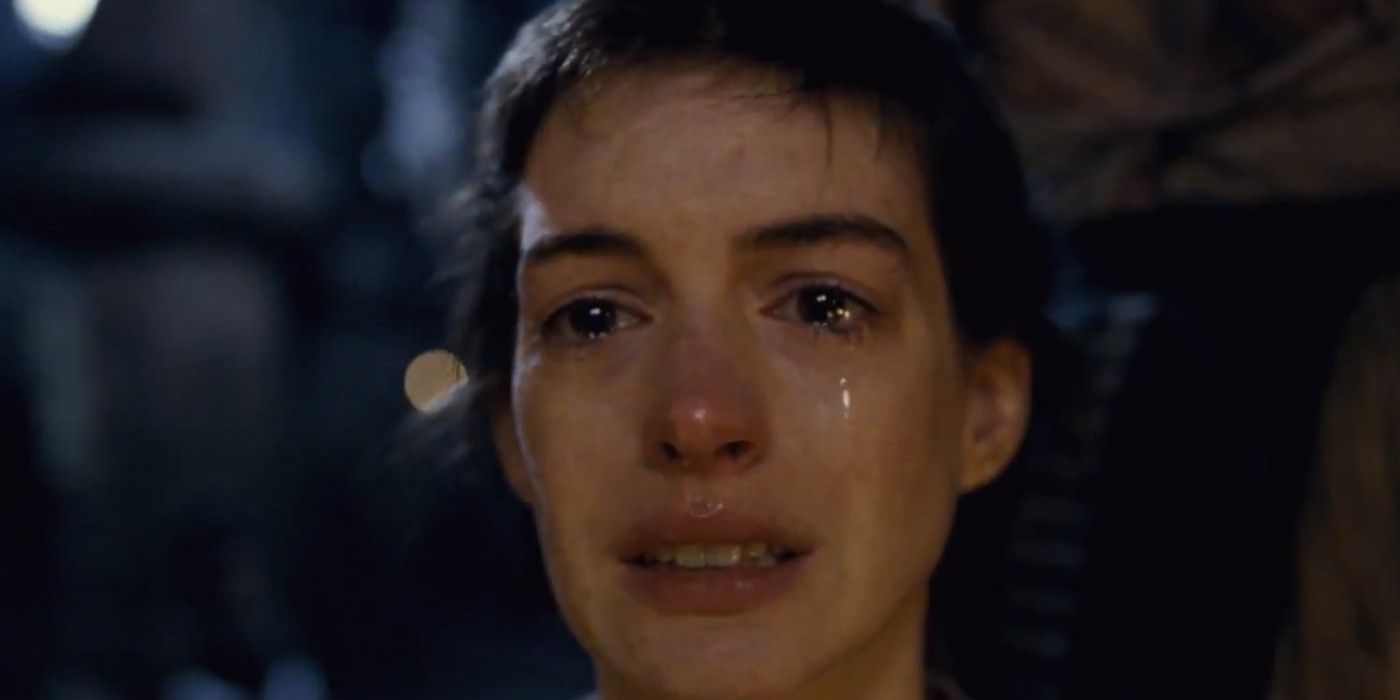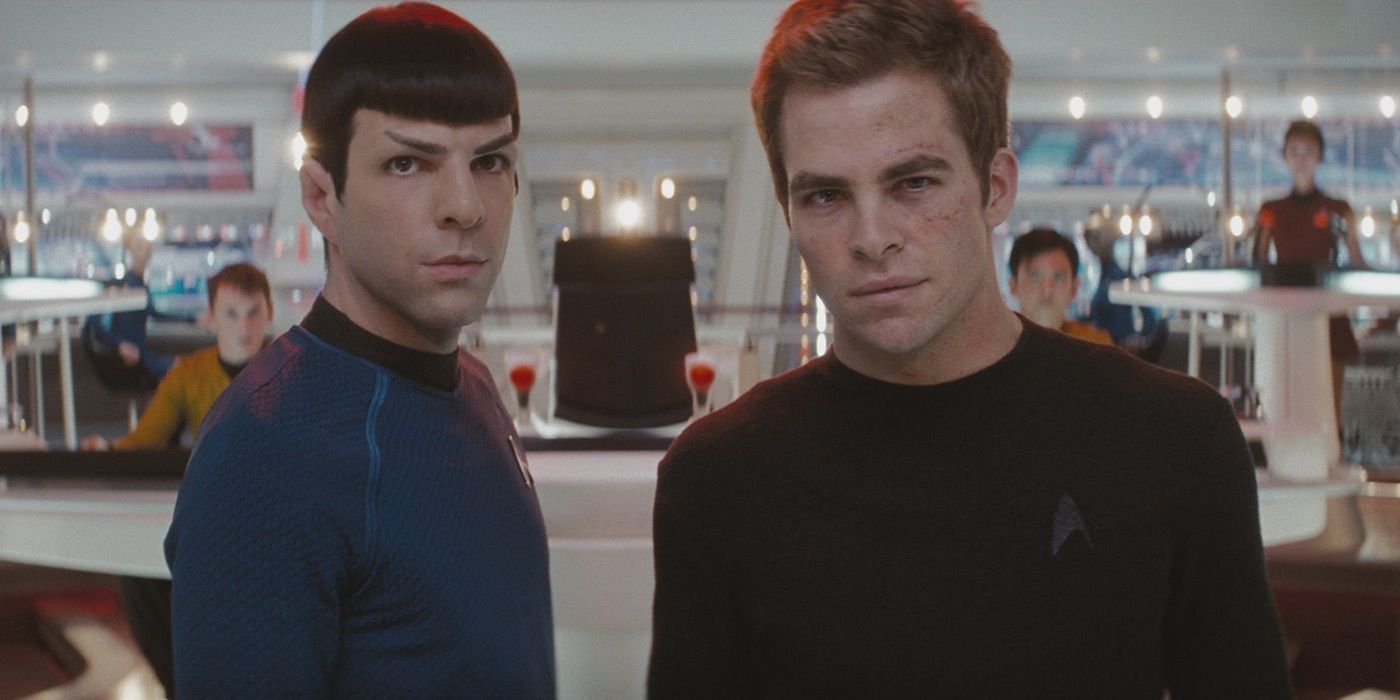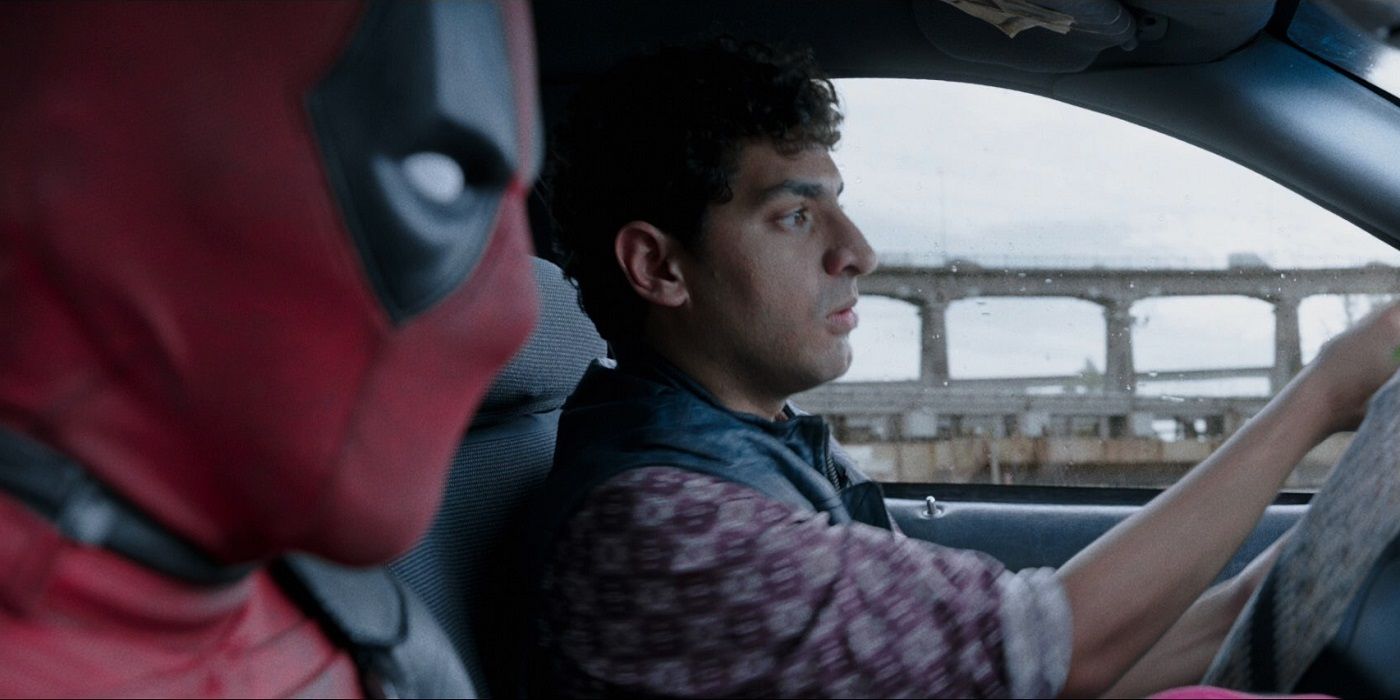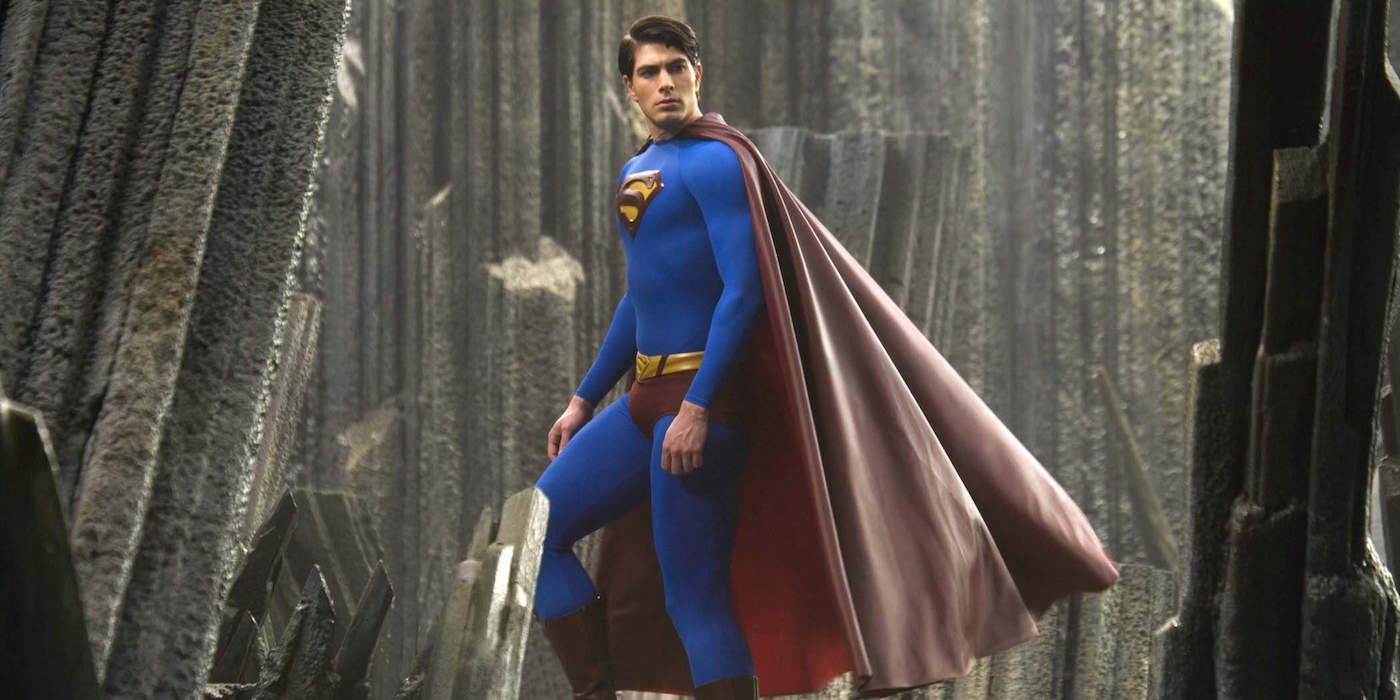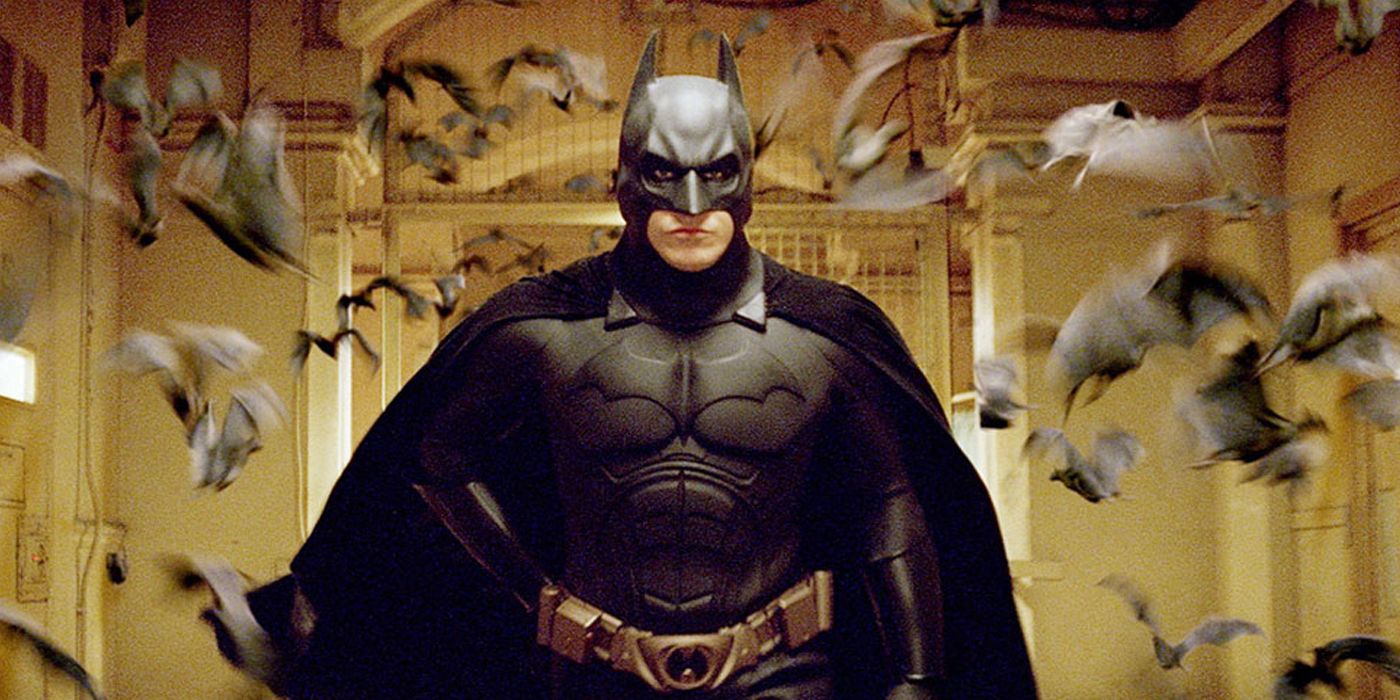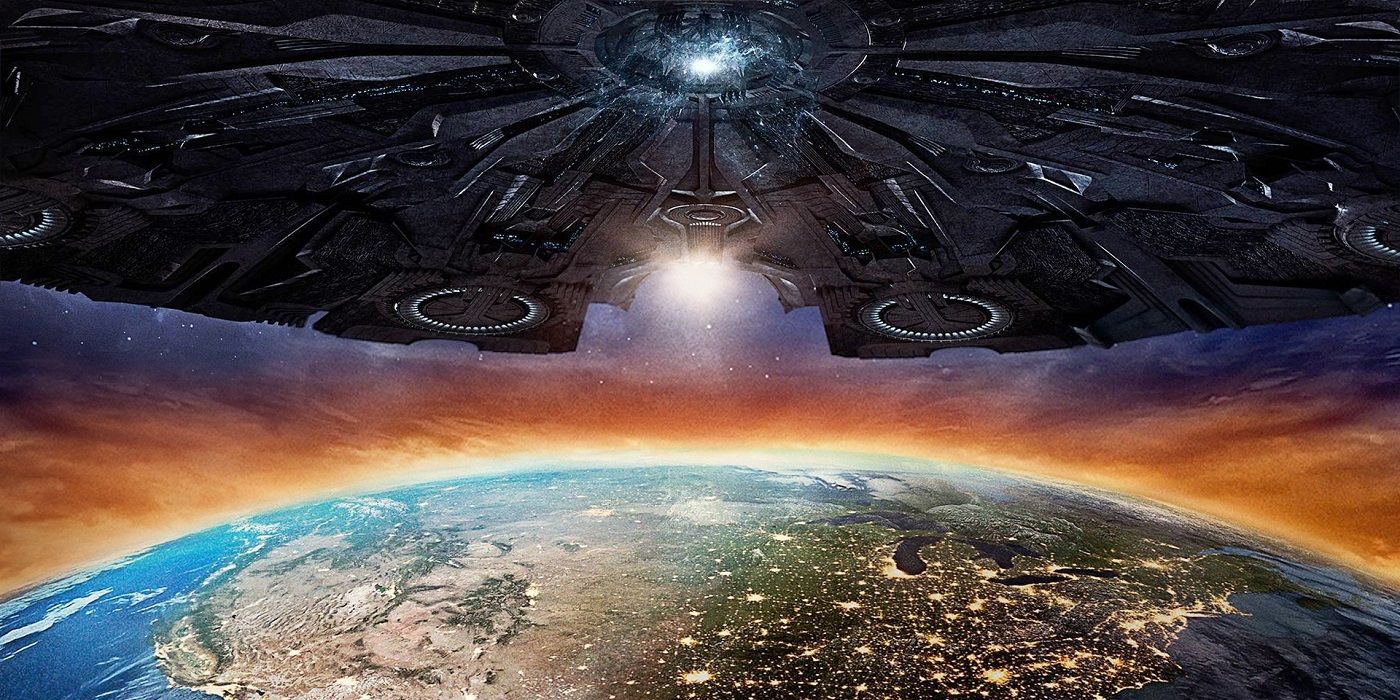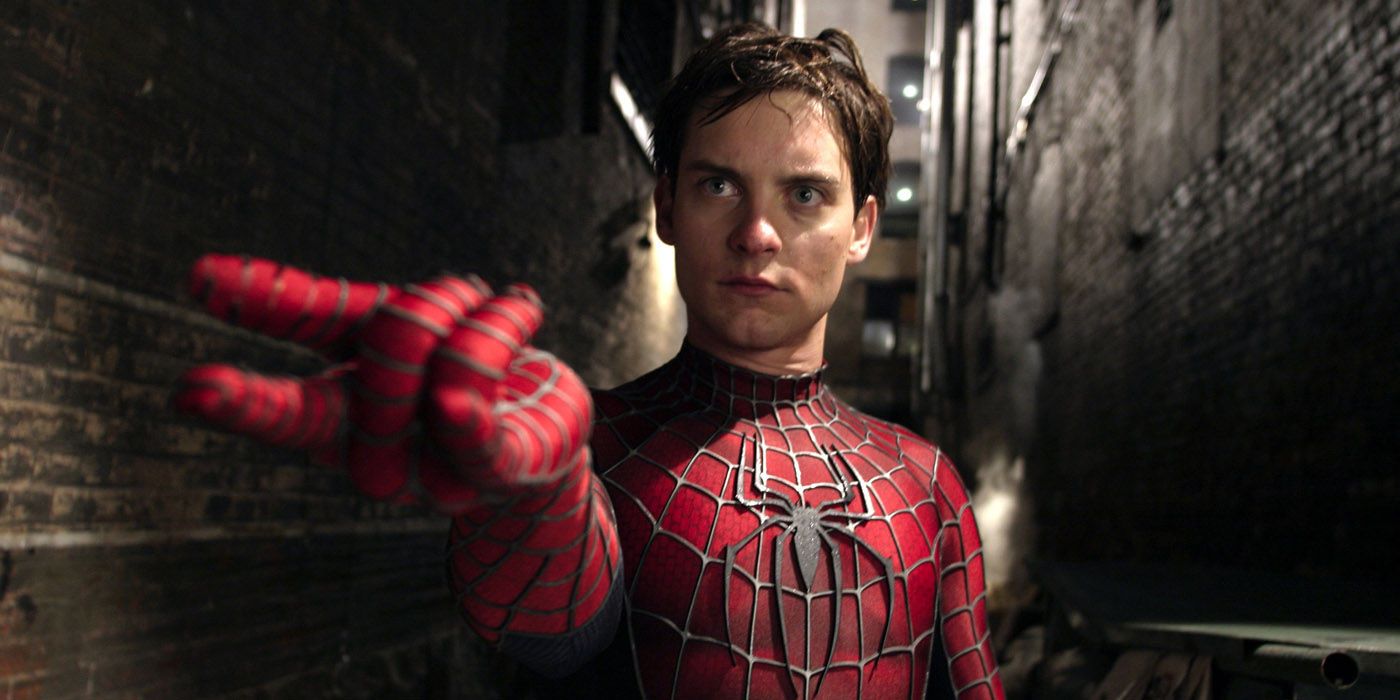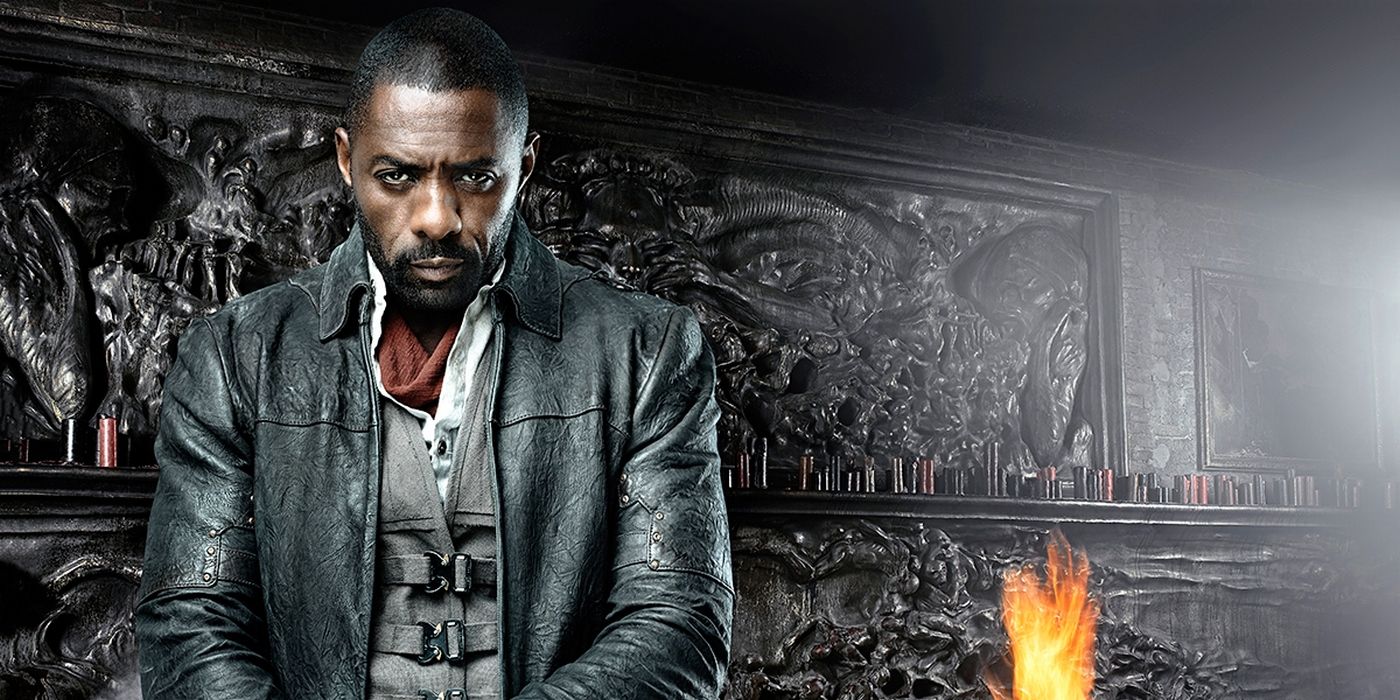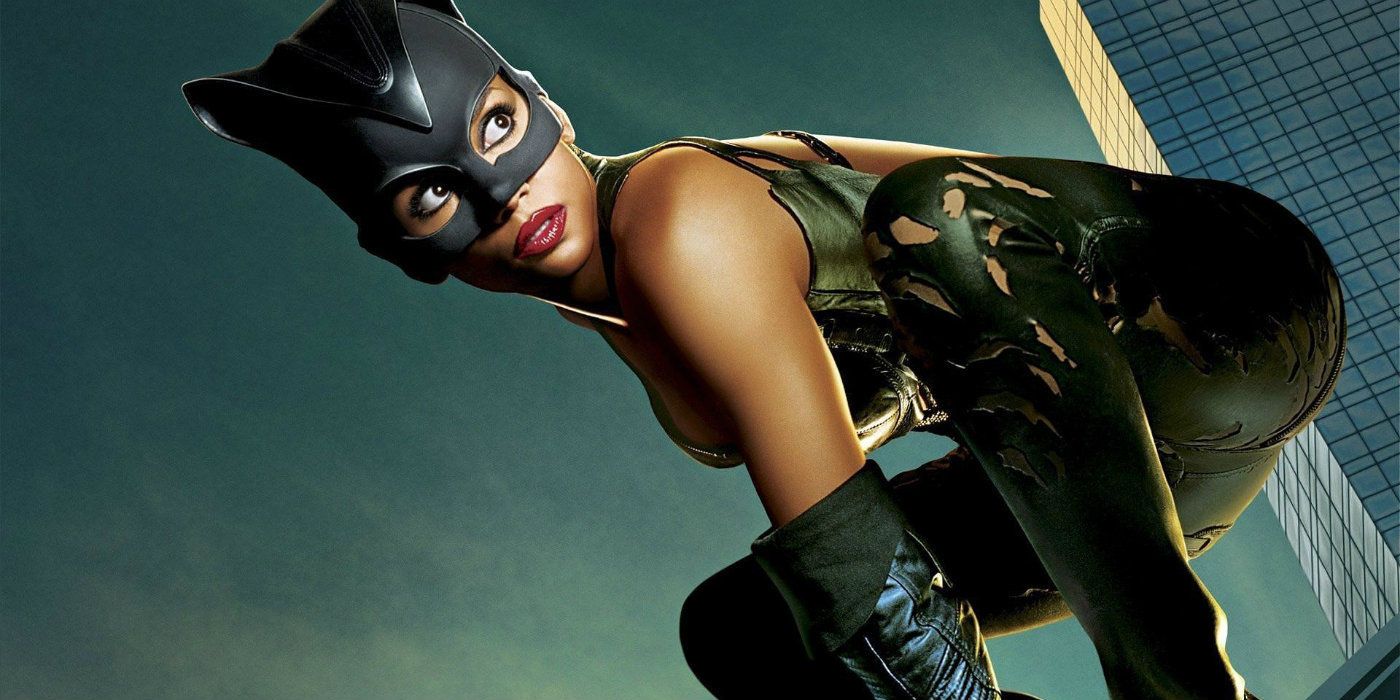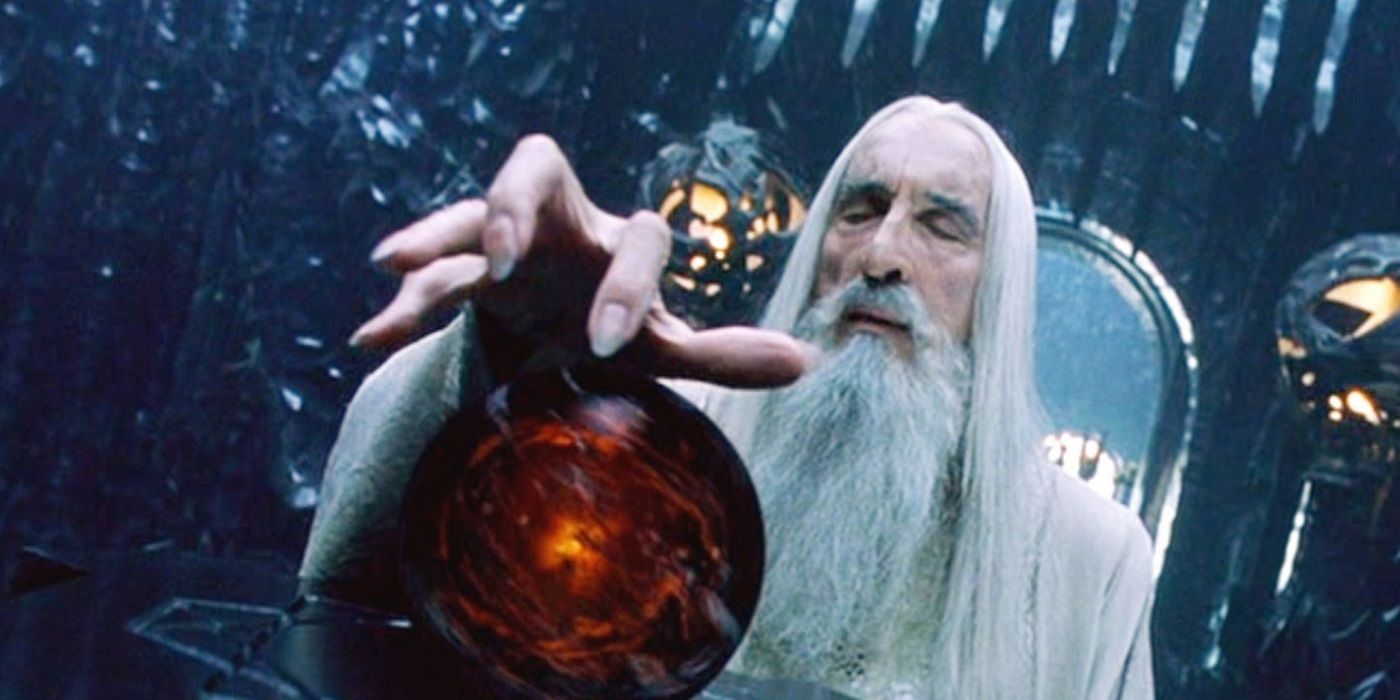As a general rule, movies take a long time to make. Production and shooting alone can last years, while the development period—the process spent writing scripts, casting, hiring crew and putting together anything else that will appear in the film—can drag on for decades. Some movies never even make it out of so-called Development Hell, toiling there instead year after year, untenable by any filmmaker.
The movies listed here, however, survived the brutal conception period, often after long slogs through cinematic Hades. Some turned into latter-day classics, while others amounted to cinematic Hades... for the viewers. Oftentimes the stories behind the Development Hell periods for a movie are just as interesting as the movies themselves, or even even more so. For that reason, we have put together this fun little expose on some of the most notorious escapees of movie Limbo. Grab some holy water and tape a crucifix to your Blu-Ray player, and check out 15 Movies That Survived Development Hell!
15. Chicago
Though overshadowed by A Chorus Line way back in 1975, the original Broadway version of Chicago, directed by the legendary Bob Fosse, proved a solid hit, running for more than 900 performances. Fosse, who had already won an Oscar for directing Cabaret, then set about planning a film adaptation. He spent several years working on other projects like the autobiographical musical All That Jazz (which takes its name from a song in Chicago) and the outstanding Star 80 before he realized how to accomplish Chicago on screen. He enlisted Liza Minnelli, Goldie Hawn and Frank Sinatra to star… before dropping dead. As Fosse found himself in literal limbo, so did Chicago, which languished on the shelf for 20 years.
The 1996 revival brought Chicago newfound fame, and the musical gained recognition as a bonafide, if overlooked, classic. Movie rumblings began again, with Miramax optioning the rights and tapping Goldie Hawn and Madonna to star as murderesses Roxie and Velma, respectively. Then Development Hell struck again. The project languished in development long enough that Hawn dropped out and Charlize Theron stepped into the part of Roxie. Then Madonna dropped out, and the studio considered Cameron Diaz to replace her. When Bill Condon signed on to pen the script and Rob Marshall to direct, the project underwent another retooling. Marshall cast Catherine Zeta-Jones, Renee Zelwegger and Richard Gere in the leads, and Chicago became big hit, winning the Oscar for Best Picture.
14. Alien 3
“Everyone wanted to make the sequel to Aliens” producer David Giler recalled, “except us.” Hot off the success of the first sequel to Alien, Fox studios, and indeed, the world, salivated for another adventure with Sigourney Weaver’s Ripley. But what to do, story-wise? Weaver hesitated to commit to returning, so Giler and producing partner Walter Hill decided to minimize her role and focus a new story. Author William Gibson submitted an action-driven script in the vein of Aliens, but the producers decided to pass. They then brought on writer Eric Red, who contributed a script about Colonial Marines fighting Xenomorphs on a space station farm. Around the same time, Renny Harlin signed on to direct. Harlin disliked Red’s approach, so Giler and Hill hired David Twohy to write a script. Twohy’s story took place on a prison planet, which prompted Harlin to depart. Fox head Joe Roth then mandated that Ripley appear, or that Alien 3 shouldn’t move forward.
Vincent Ward signed on to write and direct, pitching an idea about a wooden space station populated by Benedictine monks. Weaver agreed to return on the conditions that her character get killed off, and that the characters not use guns. The studio set a release date. Creative tensions between Ward, Giler, and Hill resulted in Ward leaving the project during preproduction. Video director David Fincher then came aboard as Giler and Hill rewrote Ward’s script. The resulting film had one of the most notorious productions in history, and Alien 3 underperformed commercially and critically.
13. Alien vs. Predator
Around the same time Alien 3 languished in Development Hell, Fox began considering the prospect of a crossover between the Alien and Predator franchises. A comic book series based on the concept had sold well and generated a good deal of fan buzz. Meanwhile, Predator 2 landed in theatres, containing a sort of “Easter egg” of an alien skull hidden in a Predator trophy room, creating an even louder buzz among fans.
Sigourney Weaver, however, disliked the concept. She agreed to move forward with Alien 3 in part to avoid an Alien/Predator crossover. The project fell by the wayside during Alien 3’s tumultuous production, though Fox again examined the concept as a potential fourth Alien film. The studio opted to make Alien: Resurrection instead, with Weaver again returning. By the late '90s, Alien vs. Predator had earned a reputation as one of the most notorious films in Development Hell, and fans wondered if the movie would ever happen.
Though James Cameron and Ridley Scott both expressed interest in making Alien 5 with Weaver, and though all three expressed opposition to an Alien vs. Predator film, Weaver’s hesitation to return for a fifth film finally prompted Fox to put Alien vs. Predator into production. Released in 2004 and directed by Paul W.S. Anderson, the movie became a modest hit, though it received scathing reviews. A sequel followed in 2007 to an even more hostile response, and Fox decided to separate the franchises again, releasing the prequels Predators and Prometheus.
12. Mad Max: Fury Road
The Mad Max movies already had a cult following and had become indie hits by the time Hollywood invited the franchise into the fold. Warner Bros. acquired the Mad Max franchise in the mid-1980s and released Mad Max: Beyond Thunderdome to strong reviews and box office in 1985. Ten years would pass before director George Miller would show interest in the series again, and in 1995, he began working on a story that would find Max in the midst of a human trafficking ring. Production set a start date of late 2001 with Mel Gibson returning to the lead, though the 9/11 terrorist attacks stalled production. Miller revived the project in 2003, though severe rainfall in Australia, where the film had scouted locations, postponed production again. Miller then considered shooting in Namibia, but the outbreak of the Iraq War raised security concerns over the production. Development stumbled again.
With Gibson ageing out of the role—and with his increased legal and personal controversies derailing his career—Miller sought to recast the lead role. The director pegged Heath Ledger as a replacement with production set to begin in 2008, though Ledger’s death again created an obstacle. Miller then recast the role with Tom Hardy, and planned to shoot the film beginning in 2011, again in Australia. Heavy rainfall delayed the project again, as Miller decided to shoot in Namibia once more. The film, Mad Max: Fury Road, released in 2015, won wide acclaim, and both Miller and the picture scored Oscar nominations.
11. Les Miserables
Victor Hugo’s novel Les Miserables had provided fodder for numerous films prior to 1987 when the book became a hit London musical. A successful Broadway run followed, and the songs from the musical quickly became musical standards the world over. Hollywood took note, and first signed Alan Parker, director of Pink Floyd The Wall and Evita to helm the movie in 1988. Budget and script concerns bogged the project in Development Hell, however, and in 1991, Bruce Beresford replaced Parker as director.
And yet the movie still languished in Development Hell. Musicals had long gone out of fashion in the age of MTV, and even savvy directors like Parker and Beresford had trouble finding a concept that could provide a framework for the story and music. Les Miserables sat on the shelf alongside other musical properties like Chicago and The Phantom of the Opera through the 1990s. Hollywood knew the properties had enthusiastic audiences, but the cost of producing such lavish spectacles made studios nervous. With musicals back in style in the 2000s, Universal Pictures tapped Les Miserables for the big screen treatment again, and signed Oscar-winner Tom Hooper to direct. Universal and Hooper approached Hugh Jackman—himself, a star of stage musicals—to star. The film saw release in 2012 and scored three Academy Awards.
10. Star Trek (2009)
Paramount, parent studio of the Star Trek franchise, had long considered jump starting the film series using a “Starfleet Academy” premise. Producer Harve Bennett had pitched the idea as early as 1991. With the original cast aging, Bennett saw the idea of a “prequel” (then an unheard of concept) as a way to keep the same characters but employ a new cast. Writer David Loughery penned a script called Star Trek: The Academy Years which earned the distinction—often derisively so—as Top Gun meets Star Trek. The studio opted instead to make Star Trek VI: The Undiscovered Country, and later, movies featuring the Next Generation cast over the “Starfleet Academy” premise.
By the mid-2000s, though, the Trek franchise had run out of gas on both the big and the small screens. Paramount then returned to the Academy concept, and again eyed Loughery’s script. Paramount eventually put it aside, according to reports, because Enterprise was still airing, and producer Rick Berman begged feature production head Sherry Lansing not to move ahead with The Academy Years, fearing that it would mean the cancellation of the last Trek TV series. The movie division still earmarked several concepts, including cameos by the original cast, Spock’s hesitations in joining Starfleet, Kirk trying to fulfill his father’s legacy and a snarling alien villain with an overpowered ship nursing a grudge against an Ambassador. All of those notions turned up again in the eventual 2009 Trek soft reboot. Nicholas Meyer, director of the second and sixth Trek movies, harshly criticized Abrams and Paramount for recycling Bennett & Loughery's concepts without giving them credit.
9. Deadpool
Fox thought they had found the proverbial cash cow with the X-Men films. How ironic, then, that the studio almost doomed the series with the dreadful X-Men: The Last Stand and even more abysmal X-Men Origins: Wolverine. The latter, in particular, sparked hope at the studio that the franchise could spin off popular individual characters into their own lower-cost sub-franchises. Origins: Wolverine also introduced two fan-favorite characters for potential spin-offs: Gambit, somnambulistically played by Taylor Kitsch, and Deadpool, played by Ryan Reynolds.
Origins, however, underperformed at the box office and while Reynolds won praise for his performance as Deadpool, the movie’s treatment of the character attracted criticism. The proposed Deadpool spin-off film stalled, as Fox focused on rebooting the X-Men series with First Class, and later, Days of Future Past.
Then something curious happened. Reynolds had filmed test footage as Deadpool in 2012 for a potential film, though Fox had relegated the project to Development Hell. In 2014, the footage leaked online and caused a sensation—this was the kind of Deadpool film fans wanted to see! Fox took note, and sent Deadpool into production in 2015. The movie debuted in 2016 to impressive box office returns and strong reviews.
8. Superman Returns/Batman Vs. Superman
As much as Superman’s movies had earned in the 1970s & ‘80s, his film franchise had stalled out by 1990. Warner Bros. the proprietors of DC Comics, began work on a new Superman movie by the middle of that decade. The studio first considered adapting the popular “Death of Superman” storyline as the basis for a film, and enlisted Kevin Smith to pen the first draft of Superman Lives. The proposed Superman Lives movie has one of the most well-documented tenures in Development Hell in Hollywood history. Director Tim Burton fired Smith and began to rewrite the project with Nicolas Cage set to star. Script and budget issues, however, and disputes between Burton and producer Jon Peters eventually caused the collapse of the film by the year 2000.
With Superman Lives dead, Warner Bros. considered a potential crossover to reboot both their Batman (see below) and Superman film franchises. Batman vs. Superman had the two characters meeting up and eventually joining forces. Wolfgang Petersen signed up to direct, only to have the project fall apart within a matter of weeks. Warners opted again for a stand alone Superman reboot, with J.J. Abrams submitting a bizarre (and awful) script that imagined Superman as a Kyrptonian prince and messiah. Warners tried to move the project forward with both McG and Brett Ratner directing, before scrapping the project altogether. The studio then turned to Bryan Singer to direct Superman Returns, which itself would get rebooted with Man of Steel just seven years later. It is worth noting, however, that both the team-up and death of Superman concepts both appeared in a later incarnation, Batman v. Superman: Dawn of Justice.
7. Batman V/Batman Begins/Batman Year One
While Superman toiled in Development Hell, the Batman films continued to show a strong box office heft through most of the 1990s. That ended in 1997 with Batman & Robin, a movie which still vies for the dubious distinction of Worst Superhero Movie Ever. With the franchise stalling, Warner Bros. knew it needed an overhaul. The studio first decided to move ahead on Batman V, alternatively known as Batman Triumphant or Batman Unchained. Joel Schumacher, director of Batman & Robin would have returned to direct, as would Bat-actor George Clooney. The story would have taken a dark, adult turn, with Batman confronting the Scarecrow and Harley Quinn, played by Nicolas Cage and Courtney Love, respectively. Schumacher later resigned from the film, citing burnout on the franchise, and Batman V landed in Development Hell.
Warner Bros. then decided to reboot the Bat-movies. Joel Schumacher had pitched the idea of the “Batman: Year One” storyline as a reboot/origin story for the character. Hot off the success of Requiem for a Dream, Daren Aronofsky signed to write and direct Batman: Year One. Aronofsky, however, wanted radical departures from the source material, including making Alfred into an elderly, African-American mechanic and the Joker into an albino pimp. Unhappy with Aronofsky’s concepts, Warners decided to move forward with Batman vs. Superman. Following the death of that project, the studio turned to Christopher Nolan, who rebooted the series with Batman Begins to great acclaim.
6. Independence Day: Resurgence
The original Independence Day had proven a massive summer blockbuster in 1996, helping to launch the career of Will Smith as a popular leading man. In an odd twist, however, parent studio Fox didn’t move ahead with an immediate sequel. Following the 9/11 attacks, however, producer Dean Devlin and director Roland Emmerich began work on a sequel treatment. The two struggled to crack an effective story, however, and the project landed in Development Hell. After several false starts, Emmerich announced he and Devlin had worked out an outline for a new trilogy that would reunite most of the original cast. Development hit another snag, however, when Will Smith demanded a reported $50 million to return.
Emmerich and Devlin then began revising their concept to focus on a new set of characters mixing with the old. By 2013, a revised script and budget plan met with Fox’s approval, and Independence Day: Resurgence finally got the green light. The movie opened in 2016 featuring Liam Hemsworth, Jesse Usher, Bill Pullman and Jeff Goldblum bombed at the box office, and suffered dreadful reviews.
5. X-Men
By the 1980s, X-Men comics had long attracted a popular readership, with characters like Magneto and Wolverine establishing cults of their own. Low-budget studio Orion Pictures optioned the X-Men in 1984, though the high cost of making a film that would require expensive special effects proved unfeasible as Orion began experiencing financial problems. The rights then sold to Carolco Pictures, where James Cameron signed up to produce the film for then-wife Katherine Bigelow to direct. Cameron suggested Michael Biehn for the role of Cyclops, while Bigelow eyed Angela Bassett as Storm and Bob Hoskins as Wolverine. The bankruptcy of Carolco derailed the movie, and the X-Men landed in Development Hell once again.
Fox studios acquired the rights to the X-Men based on the popularity of the X-Men animated series, and began a new take on the property. No less than six writers contributed scripts, none of which pleased Fox, and all of which departed heavily from their source material. Fox then hired Bryan Singer to continue work on the project with producer Tom DeSanto. The two spent several years battling with Fox over the tone of the script and the budget; Fox preferred a sci-fi comedy in the vein of Men in Black, while Singer & DeSanto wanted a more serious take.
X-Men debuted in 2000 to strong box office and a mixed reception from fans and critics. The sequel X2 followed in 2002 to wide acclaim and box office gold.
4. Spider-Man
Much like his fellow Marvel heroes the X-Men, Spider-Man faced a long and arduous path through Development Hell to cinemas. Low-budget studio Cannon Films optioned the rights in the mid-‘80s for Tobe Hooper to direct. The Cannon incarnation ran into problems from the start, as script and budget issues kept the project confined to Development Hell. That Cannon head Manahem Golan also wanted Peter Parker to turn into a literal spider also caused problems.
Carolco Pictures picked up the rights following Cannon’s bankruptcy in the late ‘80s at James Cameron’s behest. Cameron began developing a script to direct that would have featured Spider-Man taking on Doc Ock. The amount of violence, profanity and sexual themes in the script gave Carolco pause, however, as did a lawsuit by Manahem Golan alleging that Cameron had used elements of the Cannon treatment in his script. Further lawsuits followed, as did the bankruptcy of Marvel and Carolco. Rights disputes lasted until 2000 when Spider-Man finally landed at Sony. The studio set about producing a movie for Sam Raimi to direct, which eventually hit screens in 2002.
3. The Dark Tower
Stephen King has had a rough go at the movies. While some, like Carrie become classics, others like Thinner or Maximum Overdrive become punchlines. King’s magnum opus, The Dark Tower, had long attracted the attention of Hollywood. The elephantine series runs a whopping eight novels, making an adaptation a tricky prospect. J.J. Abrams first showed interest in the property in the mid-‘00s after the success of the television show Lost. Abrams intended to write, produce and direct with collaborators Damon Lindelof and Carlton Cuse. Ultimately, Abrams realized the sprawling epic as beyond his capabilities, and his option on The Dark Tower lapsed.
Ron Howard and Brian Grazer stepped up to develop the film in 2010 for Universal Pictures. Their plan had no shortage of ambition: the books would require a trilogy of films and a separate TV series to tell the story. The enormous cost and span of the concept, however, ultimately derailed it, even after Javier Bardem had signed on to play the lead. Universal first tried to lower the budget before sending the project into turnaround. The Dark Tower continued to labor in Development Hell until 2015, when Sony Pictures made the surprise move of fast-tracking Howard’s multi-film concept. The Dark Tower, starring Idris Elba and Matthew McConaughey, will debut in theatres in 2017.
2. Catwoman
Though Batman Returns earned mixed reviews from critics and audiences alike, Michelle Pfeiffer’s performance as Catwoman won wide praise. Pfeiffer and director Tim Burton both fell in love with the character as well, and began developing a possible spin-off. Pfeiffer would return to star, as Burton would return to direct. Batman Returns scribe Dan Waters began working on a script, while Warner Bros. looked for a mid-1990s release date. Waters’ script found Selina Kyle suffering from amnesia following the events of Batman Returns, having relocated to a Palm Springs-like retirement community to live with her mother. Selina’s Catwoman personality would return to take down a team of corrupt superheroes, and Batman would have a cameo as well.
Warner Bros. showed less enthusiasm for Waters’ decidedly adult, satirical take on the character, especially after the family-friendly Batman Forever opened at the box office. Waters, Burton and Pfeiffer all eventually departed as the movie took up residence in Development Hell, and as the Batman movie franchise collapsed. Ashley Judd signed up to replace Pfeiffer in the lead, only to drop out herself. Halle Berry then stepped into the part under a heavily-altered script. Catwoman opened in 2004 to scathing reviews and flopped in theatres.
1. The Lord of the Rings
Writer J.R.R. Tolkien’s widely-acclaimed novel (or series of novels, depending on the publisher) had long titillated movie fans with its possibilities as a big screen epic. Within his lifetime, Tolkien approved of a proposal by Forrest J. Ackerman for a three hour film version, only to reject the plan after reading the script. Years later, United Artists picked up the property while The Beatles (yes, seriously) lobbied to produce and play the lead roles. The band took the concept to Stanley Kubrick who considered directing the adaptation before turning it down, deeming the book unfilmable. John Boorman spent a good deal of the 1970s developing the property, only to, like Kubrick, consider it unfilmable due to the massive cost it would necessitate to film. Boorman would later reuse his designs, locations and other prep work to film Excalibur.
By the 1990s though, computer technology had drastically expanded the reaches of special effects, and Miramax picked up the rights for director Peter Jackson. Jackson proposed splitting the work into two, and later, three separate films to film simultaneously. With the price tag on the trilogy approximating $300 million, Miramax’s parent company Disney killed the project again. New Line Cinema, awash with cash from the Austin Powers and Rush Hour movies, then decided to bankroll the The Lord of the Rings. The final trilogy won rave reviews, 17 Academy Awards, and collected almost $3 billion in revenue!

